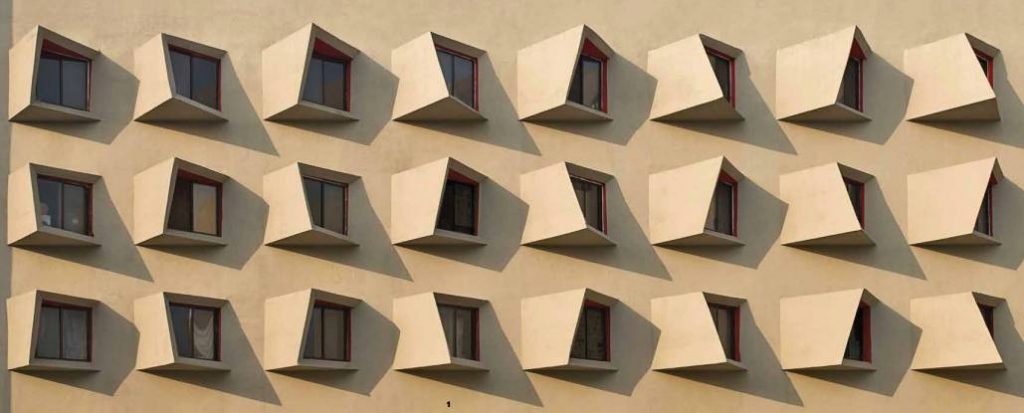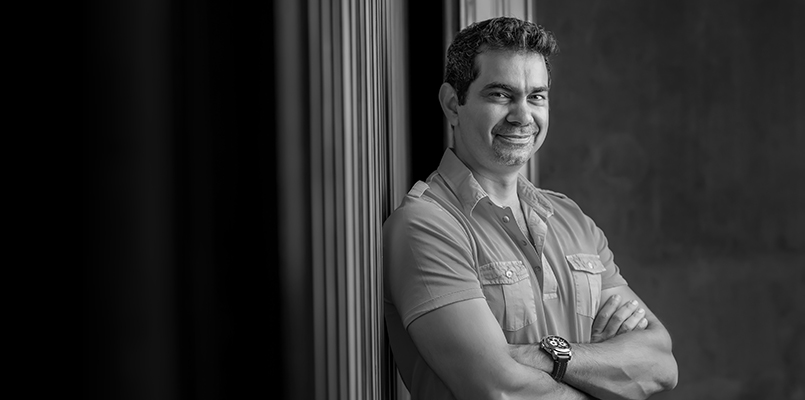Sanjay Puri
April 22, 2019
Architect Sanjay Puri is recognised as one of the leading architects in India who is known for his uniqueness and vision on contemporary architecture. His unceasing quest for innovation is heartily inspiring; his designs strive to revolutionise the way spaces are experienced by people and their interaction with the environment. He started his practice in 1992 in Mumbai and, since then, has been awarded with over 120 international and 100 national awards for projects in Spain, Montenegro, Mauritius, Abu Dhabi, Dubai and Montreal, in addition to 40 Indian cities. He has reviewed numerous architecture events, including the Leading European Architects Forum (LEAF), The World Architecture Festival (WAF) and the Perspective PLAN events held in many European countries
NA: Most of your projects are contextual. Your buildings respond to the site—its topography and the climate, more than anything else. I’d like to know what Green architecture means to you.
SP: I feel for it in every way that you can. So the whole premise of design starts merely from there. In warmer regions, [in terms of the] sun’s direction, [buildings should be] facing north, unless of course there’s some disaster happening on the north side. You screen off the heat on the southern side by planning services there and so on. So fundamentally, it starts from the site and then you negotiate how to maximise natural ventilation, minimise heat gain, and assess if there are any appropriate local materials that can be used. I am not really concerned about sanctioned Green like IGBC, GRIHA and so on. I don’t classify architecture as a rating system; for me, it’s about being responsible.
For one of our students’ housing projects in Mathura, India, the hostels were designed in such a way that all rooms have bay windows facing north and an internal corridor. There are HVAC systems in place, but even during the hottest month, the rooms never required any air-conditioning. That, in my view, is successful in terms of efficiency simply due to its orientation. It’s as simple as that and yet I don’t know why 90 per cent of us don’t do it.

NA: What are the challenges and problems that you largely face in your practice?
SP: In India, the biggest challenge is the client, unfortunately. They are ignorant, uninformed and simply don’t understand the need for good design. They focus on how an energy efficient building instantly benefits them and fail to see how good design is actually good business for them and everyone concerned.
Secondly, most people hesitate to experiment; they don’t want to try anything new. It takes me months to convince residential clients to give one tiny open space in a place like Mumbai. They would invest in a ‘new look’ but they don’t want to bring in any substantial change—they lack vision.
Third are the architects themselves. In the greed of acquiring more work, the fees have dropped tremendously in the past few years. I am not sure how the next generation is even going to survive in the field. It’s really unfortunate and somewhere, the architects are to be blamed for it.
NA: So how would you define the role of an architect in regulating the current development in India? What role do the leading architects play in making a sustainable future?
SP: Well, we can at least start with doing justice to the projects we work on; do what is right and fight for it till the end. Buildings should relate to the area, context and the climate, to say the least. We once lost a project while trying to convince the clients to plan for a climatically appropriate layout in a hotel. We had designed large openable windows in rooms facing north, with single bays. In order to add more rooms, the clients were convinced to plan for double-loaded corridors with rooms facing south and west. Now imagine the airconditioning costs of the rooms facing south and west! Sometimes all you can do is try. So we walked out of the project. I’d rather not get involved than do something wrong.
What we do is try and convince the clients to do the right thing. We say what’s appropriate and guide them in the right direction—some agree and some don’t. Our goal is to create awareness, design interesting spaces and give a completely different experience. Otherwise, where’s the fun?
Secondly, a team of responsible designers should form a regulatory body that can enforce progressive policies and by-laws in our country. So we organise an event called Dialogue. Every year, a group of 50 architects gather to identify key issues that need attention. Together, we appeal to the current governing body, for instance, the council of architecture, and concurrently prepare to run for subsequent elections to make things happen. I think this is really important and we are trying, but it’s just that we don’t get enough time. I, however, really want to follow through and make a difference.
To read the complete article, get your hardcopy at our online shop/newsstands/major bookstores; subscribe to FuturArc or download the FuturArc App to read the issues!
Previously Published FuturArc Interview
Contact us at https://www.futurarc.com/contact-us for older interviews.


